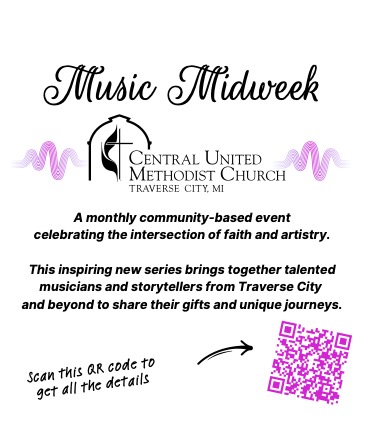
Could Bay Bucks Go Digital?
By Beth Milligan | March 30, 2019
Since Traverse City’s own locally-based currency, Bay Bucks, debuted in 2005, the monetary system has struggled to find widespread traction in the marketplace. Only a handful of businesses still accept the printed bills, the Bay Bucks board of directors has sat dormant for several years, and many residents don’t realize the currency is still in circulation – if they were even aware Bay Bucks existed at all.
But what if Bay Bucks could be modernized for a new generation of users: accepted at a wide range of businesses, capable of paying for essentials like rent and utilities, and most importantly digitized – as easy to use with a smart phone as Apple Pay or Venmo?
That’s the vision Bay Bucks board members and supporters plan to explore at a free special panel event on Sunday, April 7 at 2pm at the East Front Street location of TBA Credit Union. “Local Currency for Economic Democracy: Past, Present & Future” will feature a panel discussion and community dialogue on how to reinvigorate Bay Bucks as a viable local currency. Panelists will include Bay Bucks board members Nellie Eve Skallerup and Holly Jo Sparks, Oryana Community Co-op General Manager Steve Nance, author Stephanie Mills (who originally helped launch Bay Bucks), Crosshatch Center for Art and Ecology Co-Director Brad Kik, and Executive Director Adam “Fuzzy” Konner of Common Good Washtenaw, which launched a digitized local currency in the Ann Arbor area in 2015.
Levi Meeuwenberg and Blase Masserant are organizing the event, which proposes to examine the current benefits and challenges of using Bay Bucks, as well as larger issues of local currencies and economies and how Traverse City residents can “make the economy better serve our local community, businesses, and producers.” Meeuwenberg says he’s coming to the event “as an outsider” to Bay Bucks who was intrigued about the idea of a local currency and wondered why Traverse City’s version wasn’t more successful. “I’m coming from a place of curiosity of what potential there is for Bay Bucks or some other sort of local or regional currency in the future,” he says. “Instead of reinventing the wheel or making the same mistakes, we wanted to connect with those who already have that experience and bring their knowledge forward so we can all benefit from it.”
Bay Bucks – available in denominations of $1, $5, $10, and $20 – were initially greeted with excitement when they first launched 14 years ago. Individuals could trade in U.S. dollars for Bay Bucks on a one-to-one basis; Bay Bucks could then be spent exclusively at participating Traverse City businesses, with the goal of keeping money within the community and stimulating the local economy. But Sparks and Nance say that following the program launch, several of the initial champions of Bay Bucks either passed away or moved on to other communities or projects, leaving a lack of enthusiastic advocates who would aggressively market the program and enlist businesses and consumers to participate. Oryana now serves as the de facto bank for Bay Bucks and is one of the few active businesses that accepts the bills; Nance says Oryana board members are paid stipends in Bay Bucks and some vendors, suppliers, and musicians are also partially paid with the currency. Green Island in downtown Traverse City and Odom Reuse in Grawn are among the small group of other businesses that accept Bay Bucks, but the program’s popularity has otherwise dwindled.
In addition to a lack of participating businesses, one of the primary challenges of Bay Bucks is its cash-based approach to paying for goods or services. “A lot of people who would be interested in using local currency, particularly younger people, don’t carry cash,” says Sparks. Nance agrees: “I would love for Bay Bucks to be reinvigorated, but it’s clunky to use in its current form.” Switching to a digitized system – either one entirely based online, or one that works concurrently with a cash system – would open up the currency to an entire new group of users, panelists believe.
Meeuwenberg says he’s excited to have Konner attending the event to speak about Common Good Washtenaw, one of several community groups organized nationally under the Common Good umbrella that have launched digitized local currencies. “If you really want to get (Bay Bucks) adopted in this day and age, it has to have a digital component,” Meeuwenberg says. “It’s kind of a necessity.” Preliminary conversations indicate Traverse City could potentially join under the Common Good umbrella and convert Bay Bucks to a digital system like the one Washtenaw uses, or else explore launching its own system. According to Meeuwenberg, an important component of successful local currencies is being able to use them in a wide number of places – not just at some stores, but also to pay other individuals (like giving rent to a roommate, as is possible with Apple Pay and Venmo) or to pay public utility bills. Utilities represent a large expense not just for individuals, but for businesses – their participation would ensure businesses would have a place to reinvest the Bay Bucks they receive, Meeuwenberg explains.
In a culture that increasingly emphasizes consumer trends like “buy local” and “farm-to-table,” having a robust local currency like Bay Bucks can give communities better control over their own economies, prevent wealth drain from the region, and provide a more democratic approach in allowing a wide variety of users to participate in the financial system, according to panelists. Sparks is hopeful next week's panel event could lead to new ideas and renewed enthusiasm for the Bay Bucks program. “If enough of us in this region said, ‘Let’s do this,’ then it's absolutely possible,” she says. “It’s just going to take enough people interested in doing it.”
Comment






